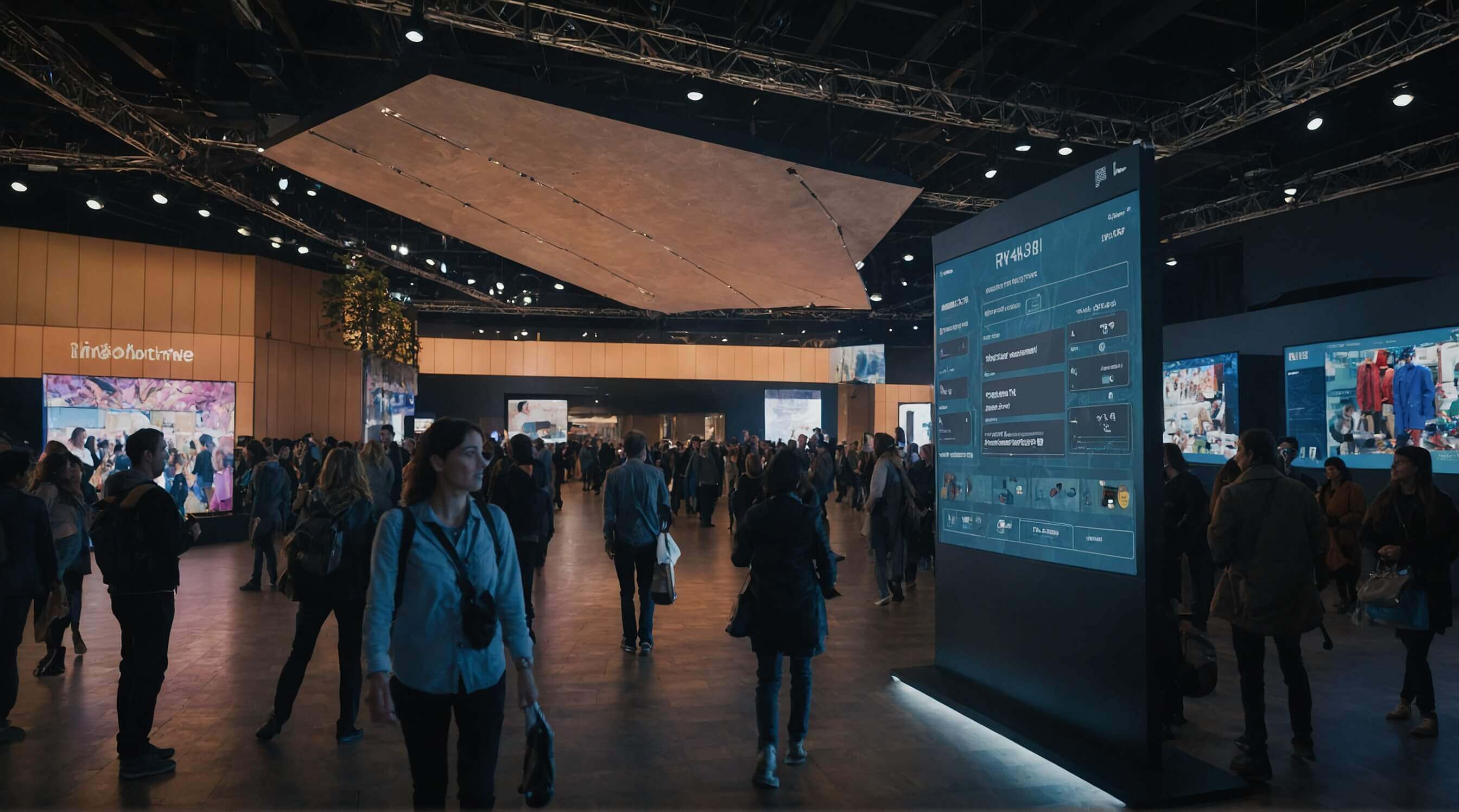In recent years, the focus on digital signage has intensified, with event planners capitalizing on this technology to manage large crowds and enhance personalization at events. As we look toward 2024, the integration of digital signage is poised to evolve, driven by AI, interconnected smart systems, and a push for sustainability. Industry projections suggest a 7.3% annual growth rate in the digital signage market, reflecting increased demand and technological advancement.
Adapting to New Trends in Digital Signage
Digital signage has traditionally provided dynamic advertising platforms, offering sponsors the ability to update content in real-time. This adaptability not only adds value to sponsorships but also improves attendee experiences with relevant, timely offers. Recent software advances now allow for the integration of programmatic advertising, which has increased digital signage revenue by an estimated 15% through more efficient ad placements.
Programmatic advertising uses algorithms to automate ad sales and display, eliminating the need for manual intervention and enhancing content relevance. Additionally, AI is being introduced to modify ad content and sequencing automatically. Though still emerging, AI in digital signage could revolutionize content dynamism, with pilot programs reporting a 20% increase in viewer engagement.
Practical Applications of AI in Digital Signage
AI's immediate utility is expected to focus on content verification and adaptation based on real-time data. For instance, AI could adjust information based on the lengths of lines at concession stands, potentially reducing wait times by up to 30%. This application not only improves the attendee experience but also optimizes venue operations.
 Digital Signage in Major Events - 2" style="height: auto; max-width: 100%; width: 2688px;">
Digital Signage in Major Events - 2" style="height: auto; max-width: 100%; width: 2688px;">
Development and IoT Integration in Digital Signage
Development continues for digital signage that interfaces seamlessly with the Internet of Things (IoT). Future digital signs may use proximity sensors to engage attendees from a distance and then switch to detailed information as they approach. Early tests show that such IoT-enabled signs can increase local engagement by up to 40%.
Sustainability in Digital Signage
The digital signage industry is making strides in reducing its environmental footprint. Transitioning to LED technology has reduced energy consumption by up to 90% compared to traditional LCD screens. Further, the exploration of solar-powered signs could lead to a 50% reduction in energy use in outdoor signage within the next five years.
Maximizing Technology for Effective Implementation
Successful implementation of digital signage technologies requires effective data utilization. By employing AI for data analysis, event organizers can tailor content more precisely, which has been shown to increase content effectiveness by 25%. Real-time engagement analytics also help stakeholders adjust strategies promptly, enhancing overall event success.

Considerations for IoT Connectivity
IoT-enabled digital signs generate substantial data, which can be used to enhance future events. However, this requires significant data processing capabilities and robust cybersecurity measures, as the number of internet-connected devices increases the potential attack surface by over 50%.
Advancing Energy Efficiency
Advancements in energy efficiency are crucial, with potential developments in e-Ink technologies and adaptive brightness displays promising further reductions in power usage. E-Ink, for instance, retains images without power and could decrease energy needs by up to 70% for certain applications.
Concluding Insights
As technology advances, digital signage is set to redefine the management and experience of large venues, making them smarter, more energy-efficient, and responsive to each visitor's needs. With each innovation, the digital signage industry continues to offer new ways to enhance the efficiency and impact of event hosting.
Learn more about the future of digital signage and how it can transform your next event!
Frequently Asked Questions
How is digital signage used at large events today?
It's no longer just static ads – events use digital screens to dynamically update content, boosting sponsorship value and attendee experience. For instance, programmatic advertising on event signage has grown revenues by ~15% by automating targeted ads. AI pilots even dynamically adjust ad sequences, with early tests showing a 20% jump in viewer engagement. This means sponsors get more effective exposure and guests see relevant info in real-time.
What practical benefits does AI bring to event attendees?
AI can adapt content based on live conditions. For example, screens can show wait times or direct crowds away from long lines, potentially cutting wait times by ~30%. This improves crowd flow and guest satisfaction. Attendees get a smarter experience (like real-time directions or dynamic concession menus), and organizers run a more efficient event overall.
How are IoT and smart features changing event signage?
Future signs will be IoT-enabled. Early tests use proximity sensors: when someone walks by, the display switches from a broad message to detailed info, increasing local engagement by up to 40%. In practice, an attendee might see a general welcome screen, then as they approach, it pivots to personalized content. These IoT features create interactivity, though they require strong data processing and security measures to handle the volume of sensor data.
What sustainability trends are affecting event signage?
The industry is going green. Many venues are moving from LCD to LED panels, which use about 90% less energy. Solar-powered digital signs are also emerging, potentially halving outdoor display energy use in the next few years. There's even work on e-Ink and adaptive-brightness displays – e-Ink can hold an image without power, promising up to 70% energy savings for certain uses. These trends mean events can run more screens with a much smaller carbon footprint.
How do data and AI analytics enhance event management?
Leveraging data is key. AI-driven analytics on signage let organizers tailor content (e.g. targeting ads) and measure engagement. By analyzing real-time data feeds, content effectiveness has been shown to increase around 25%. In practical terms, planners can see what content works and tweak schedules immediately. This data-driven agility helps events run smoother and delivers a more engaging experience for each attendee.